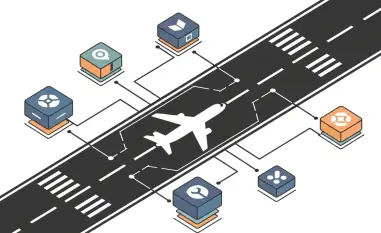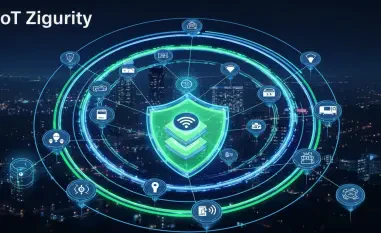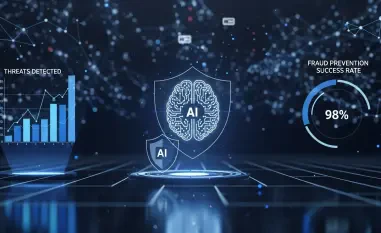Imagine a world where cyber threats evolve faster than human teams can respond, with enterprises facing an average of 11,000 third-party vendors as potential vulnerabilities, creating a high-stakes digital landscape where agentic AI emerges as a revolutionary force. This technology, promising autonomous, real-time defense against escalating risks, is reshaping cybersecurity practices. This review delves into the transformative potential of agentic AI, spotlighting innovations from key players like Wisr AI Systems Inc., and evaluates its impact on enterprise risk management in an era of relentless cyber challenges.
Core Features and Technological Breakthroughs
Autonomous Threat Detection and Mitigation
Agentic AI stands out for its ability to operate independently, scanning digital environments for risks without constant human oversight. Unlike traditional cybersecurity tools that rely heavily on manual updates and interventions, this technology identifies anomalies and neutralizes threats in real time. Platforms like Wisr AI exemplify this capability, drastically cutting down response times and minimizing the window of exposure during a potential breach.
A significant advantage lies in operational efficiency. By automating routine monitoring tasks, agentic AI frees up security teams to focus on strategic priorities rather than repetitive processes. This shift not only reduces human error but also ensures that critical threats are addressed with speed and precision, a crucial factor in today’s fast-paced threat landscape.
Predictive Analytics for Proactive Defense
Beyond immediate response, agentic AI transforms risk assessment through predictive analytics, turning static evaluations into dynamic, forward-looking processes. This feature anticipates potential vulnerabilities before they manifest, enabling organizations to stay ahead of sophisticated attacks. Wisr AI’s integration of tools like RiskAssure showcases how processing times for risk evaluations can shrink from days to mere minutes.
Such predictive power is vital for industries under constant regulatory scrutiny, where preemptive action can mean the difference between compliance and costly penalties. The ability to forecast risks based on historical data and emerging patterns positions agentic AI as an indispensable ally in crafting robust cybersecurity strategies.
Market Dynamics and Industry Shifts
The agentic AI cybersecurity sector is experiencing rapid expansion, with market growth projected at a 28% compound annual growth rate from this year onward. This surge reflects a broader industry pivot toward AI-driven solutions as legacy systems struggle to keep pace with modern threats. Enterprises are increasingly prioritizing automation to manage sprawling vendor networks and complex compliance demands.
Regulatory pressures are also shaping the market, pushing companies to adopt technologies that ensure adherence to stringent standards. Strategic acquisitions and partnerships are accelerating innovation, as seen with Wisr AI’s moves to integrate complementary platforms and collaborate with industry clusters like In-Sec-M, enhancing market reach and credibility.
Moreover, the competitive landscape is evolving as traditional vendors face disruption from agile, AI-native firms. This shift creates opportunities for early adopters to capture significant market share, provided they can navigate the challenges of scaling and customer adoption in a crowded field.
Practical Applications Across Sectors
Agentic AI finds critical application in high-stakes industries such as finance and healthcare, where data breaches can have catastrophic consequences. In these sectors, compliance with rigorous standards is non-negotiable, and agentic AI offers tailored solutions. For instance, Wisr AI’s API-first architecture allows seamless integration with existing governance, risk, and compliance systems, streamlining adherence to regulatory frameworks.
A standout use case is third-party risk management, where agentic AI automates the vetting and monitoring of external partners. This capability is invaluable for enterprises managing vast supply chains, ensuring that every link is secure without draining internal resources. The scalability of such solutions makes them adaptable to organizations of varying sizes and needs.
Additionally, the technology supports real-time decision-making during crises, such as ransomware attacks, by isolating affected systems and deploying countermeasures autonomously. This rapid adaptability underscores agentic AI’s role as a cornerstone of resilience in regulated and vulnerable sectors.
Challenges in Adoption and Implementation
Despite its promise, agentic AI faces hurdles in widespread adoption, particularly around consistent platform integration across diverse IT environments. Many organizations operate on fragmented systems, posing technical challenges to seamless deployment. Addressing compatibility issues remains a priority for developers aiming to broaden the technology’s reach.
Regulatory variations across global markets add another layer of complexity. Different jurisdictions impose unique requirements, often slowing the rollout of AI-driven solutions. Companies like Wisr AI are tackling this through strategic alliances that help navigate local compliance landscapes and build trust with regional stakeholders.
Execution risks also loom large, including maintaining low customer acquisition costs while scaling operations. Ensuring that enterprises fully embrace the technology requires robust training and support frameworks, a challenge that demands continuous investment and innovation from industry leaders.
Future Prospects in Cyber Defense
Looking ahead, agentic AI is poised to become the backbone of cyber resilience, with anticipated advancements in automation and risk intelligence. Emerging capabilities could include even deeper integration with machine learning to refine threat prediction accuracy, offering enterprises a more granular understanding of their risk profiles over the coming years.
Market expansion is expected to continue at a brisk pace, driven by growing recognition of AI’s value in combating sophisticated cyber threats. This trajectory suggests that agentic AI could redefine enterprise security protocols, making proactive defense the norm rather than the exception in corporate strategy.
The investment landscape also appears promising, as stakeholders seek to capitalize on this burgeoning field. Firms that establish early dominance through innovation and partnerships are likely to attract significant funding, shaping the next wave of cybersecurity solutions for a digital-first world.
Final Thoughts and Next Steps
Reflecting on this exploration, agentic AI proves to be a game-changing force in cybersecurity, offering unmatched autonomy and predictive strength to counter digital threats. Its real-world impact across regulated industries demonstrates a clear edge over traditional methods, while market trends validate its growth trajectory. For enterprises, the path forward involves prioritizing the integration of agentic AI into existing frameworks, focusing on compatibility and staff training to maximize benefits. Industry players need to deepen collaborations, addressing regulatory nuances through localized strategies. As cyber risks grow more complex, investing in scalable, AI-driven solutions becomes not just an option, but a necessity for enduring security.













